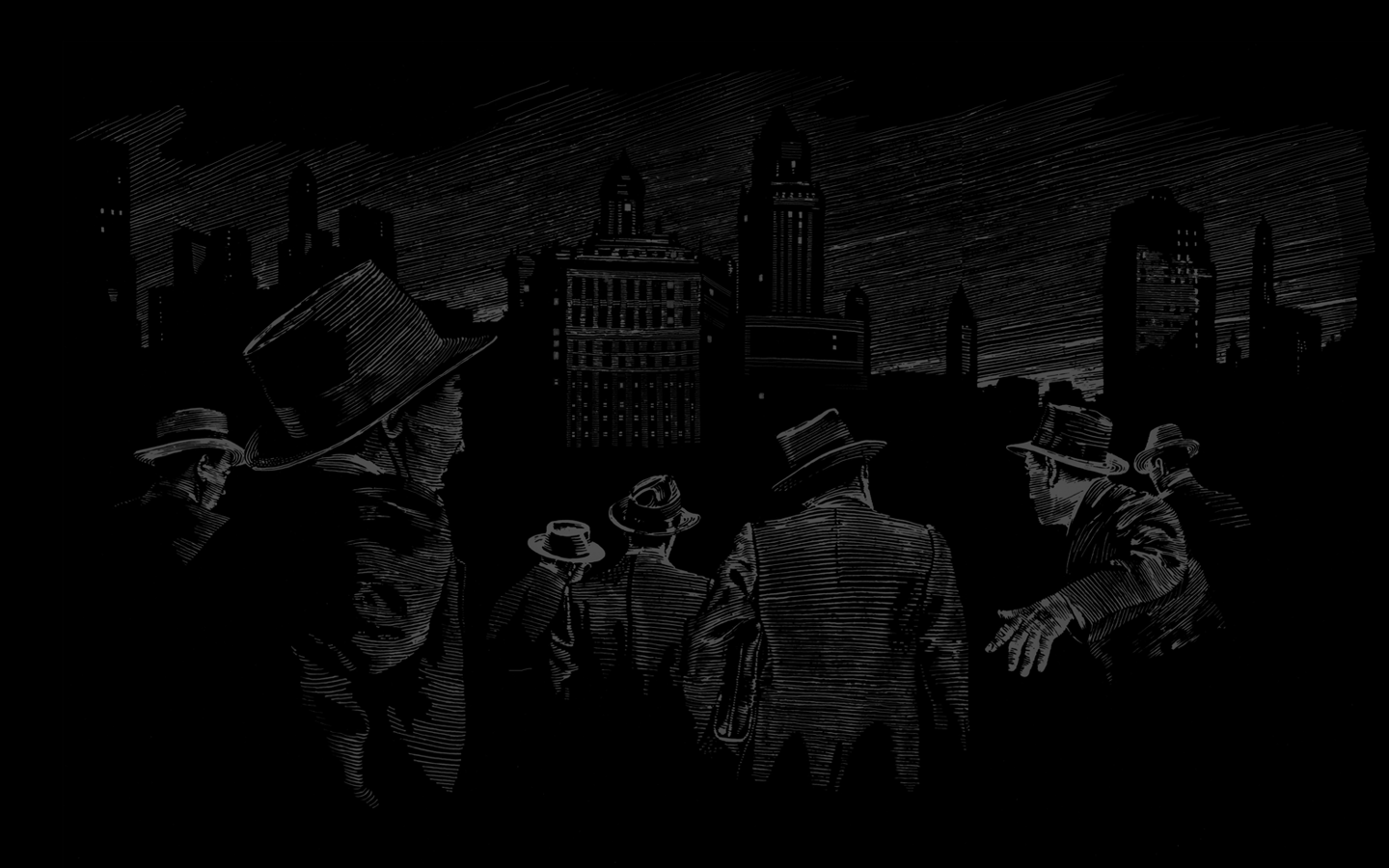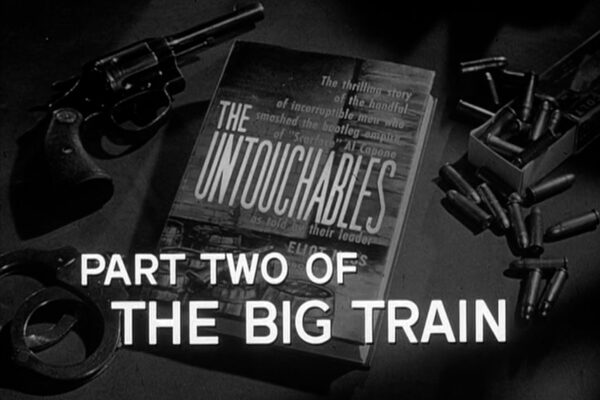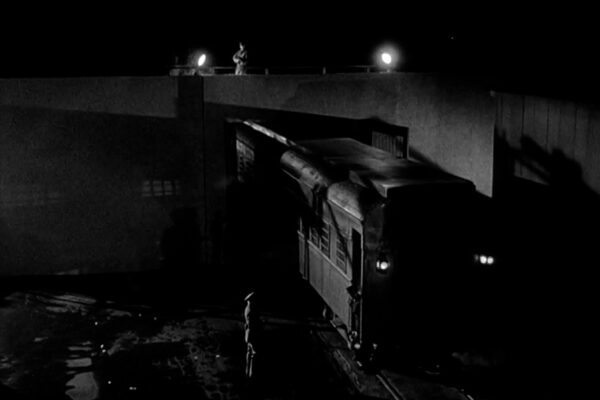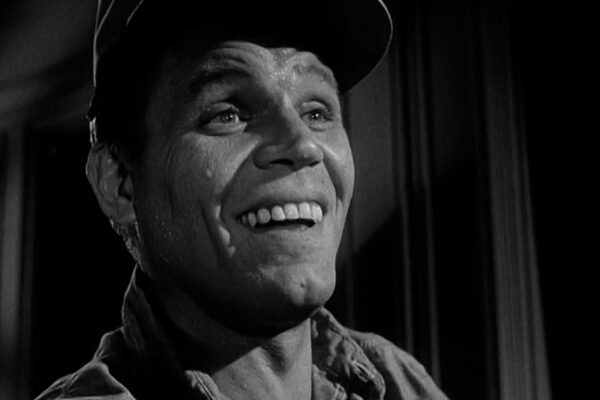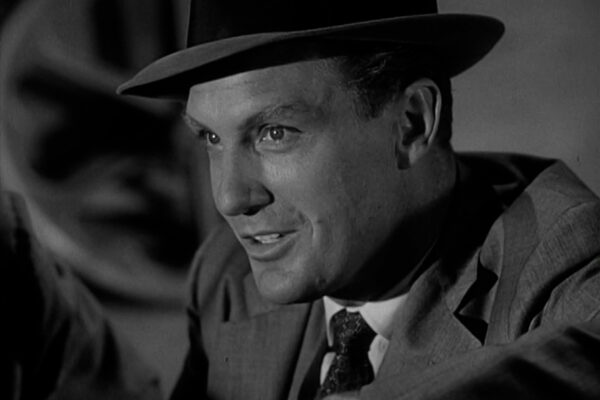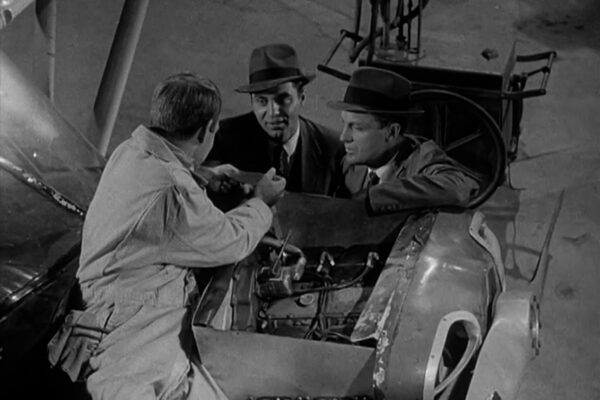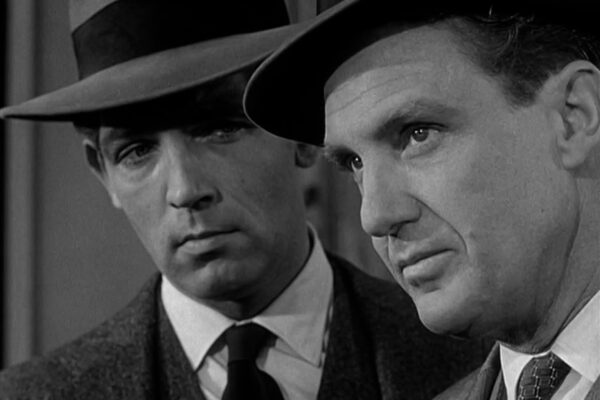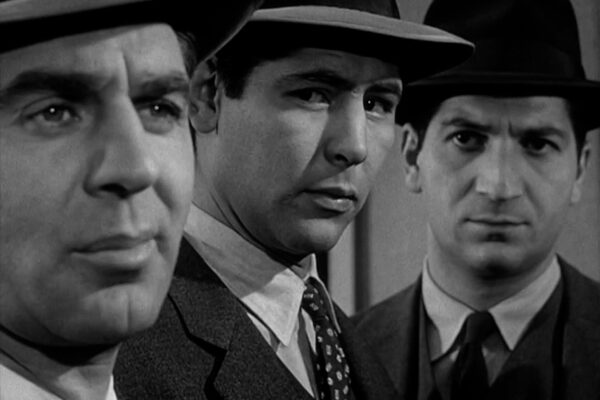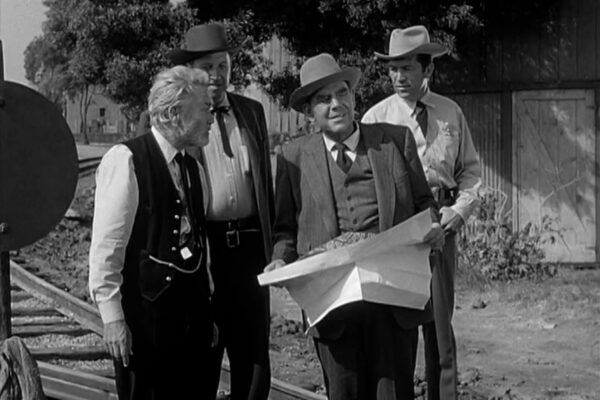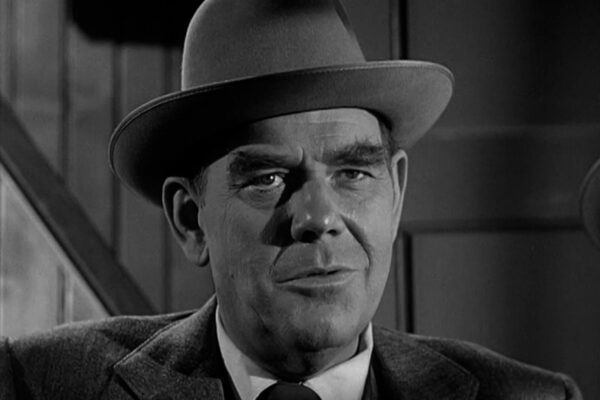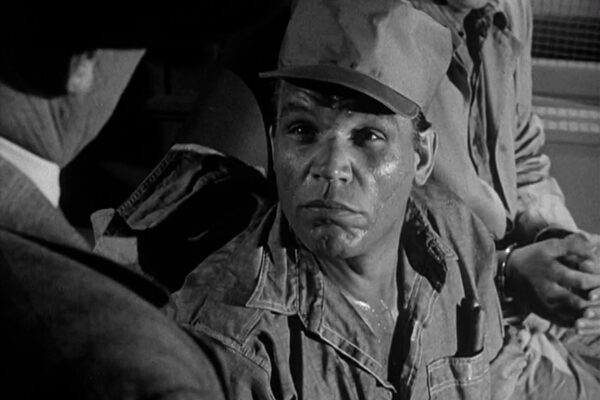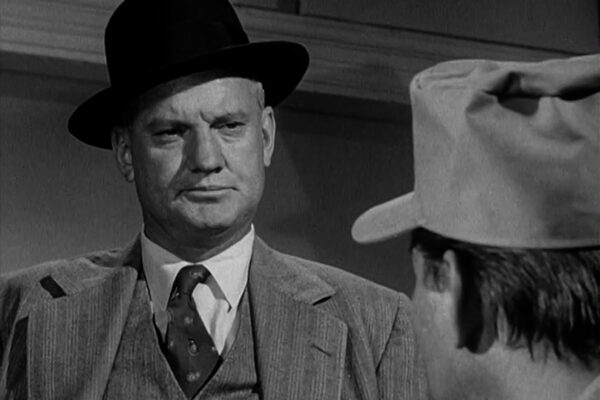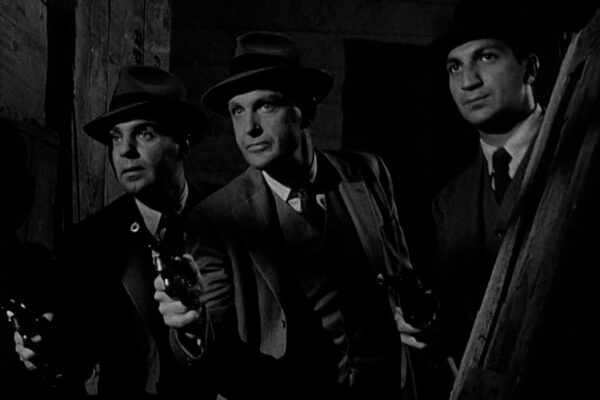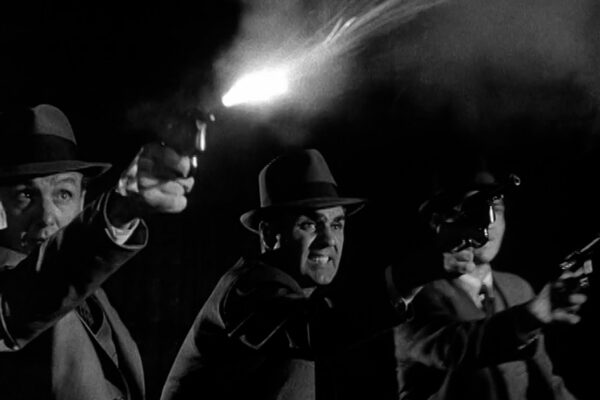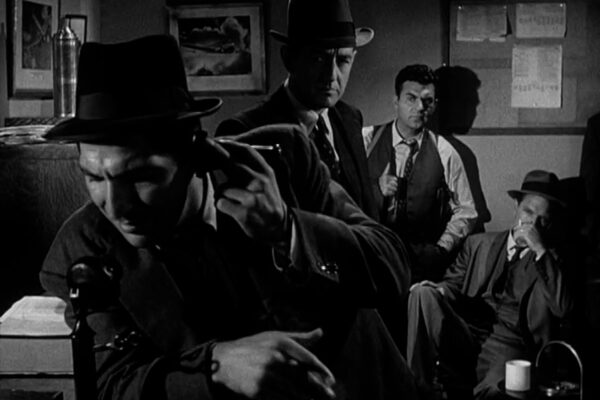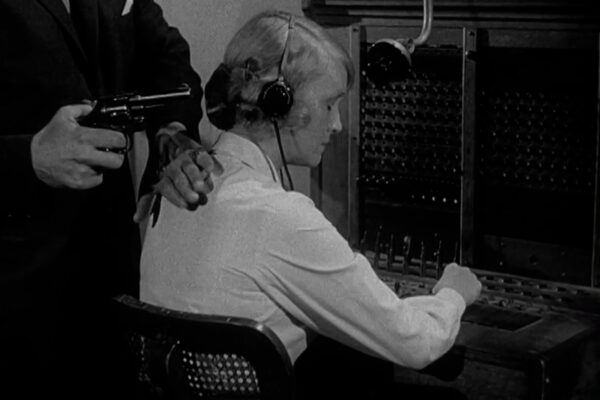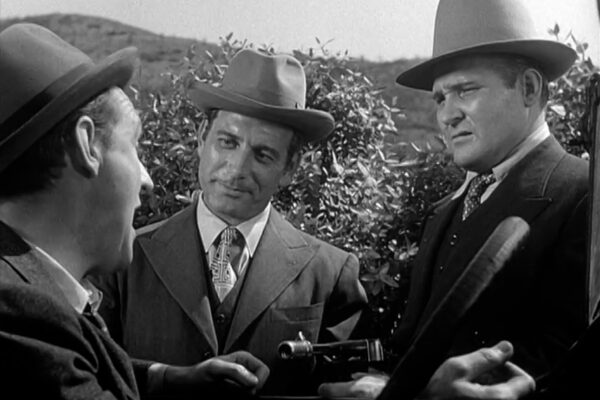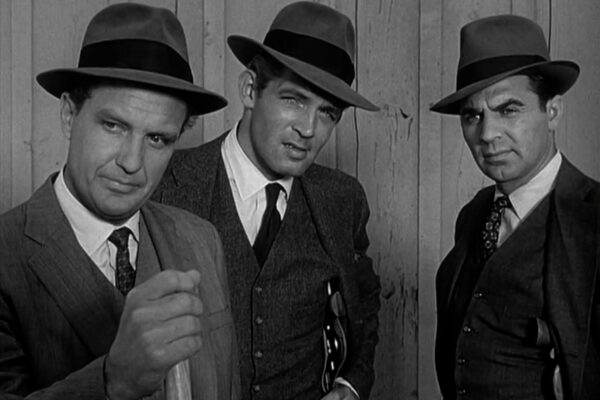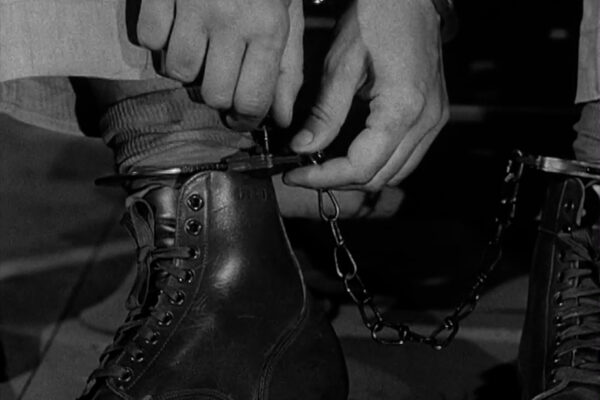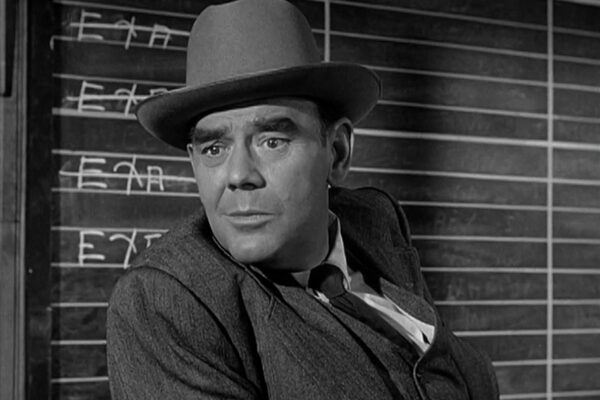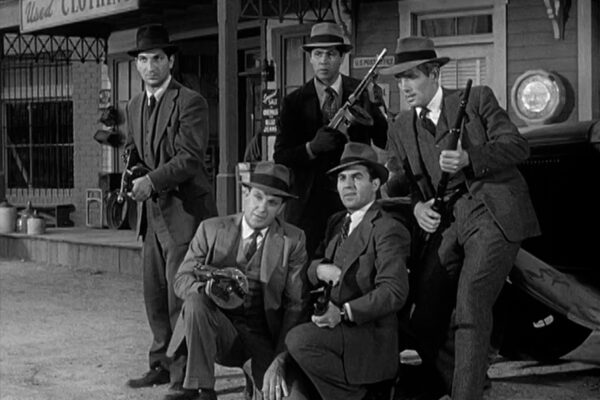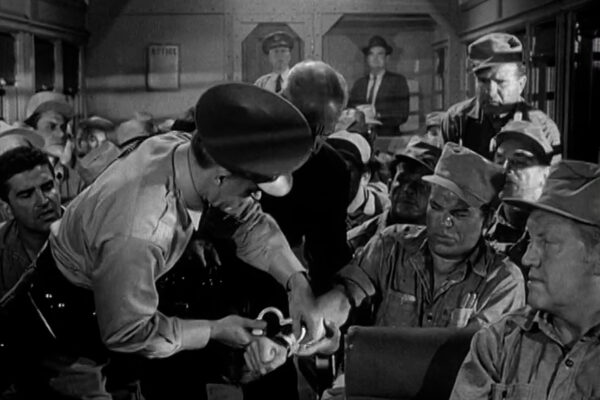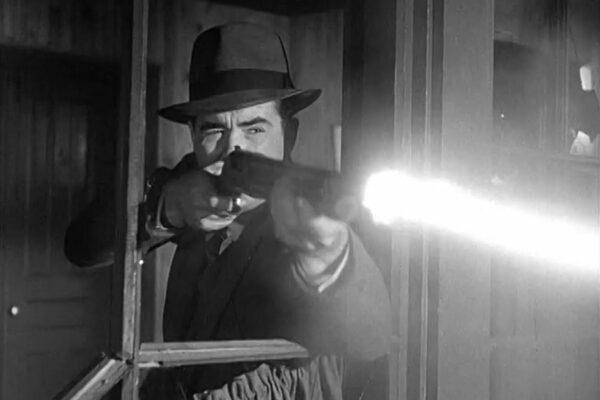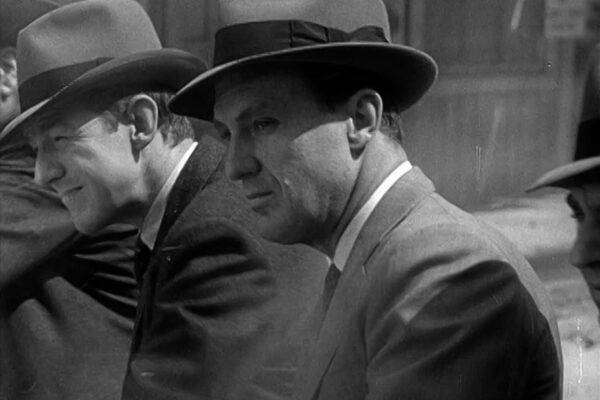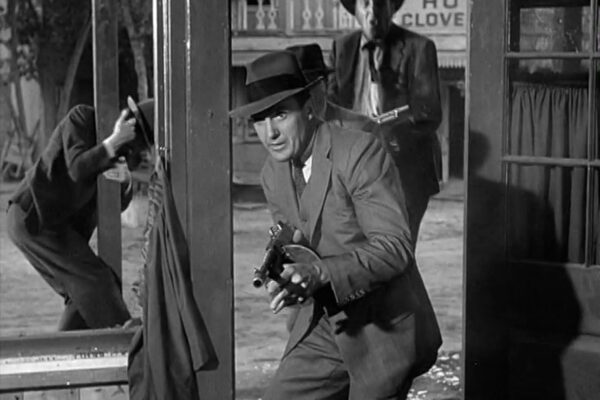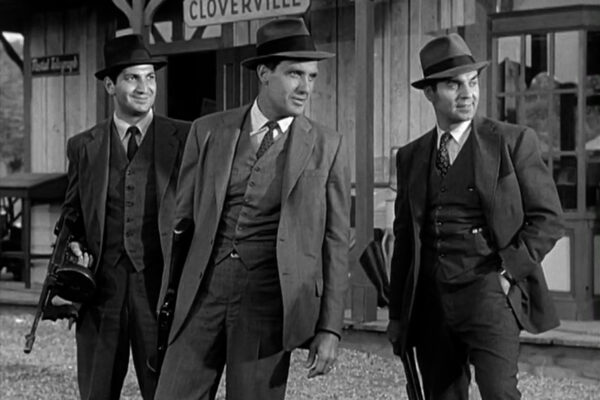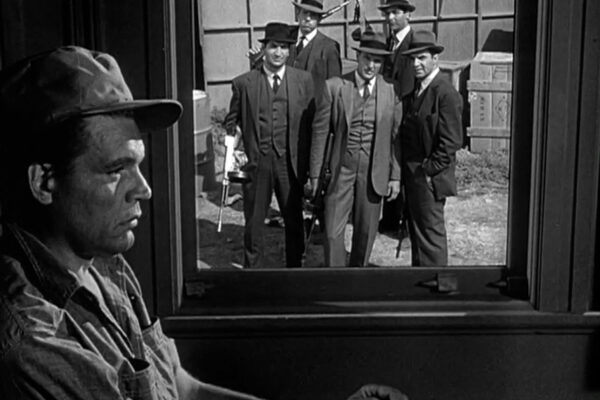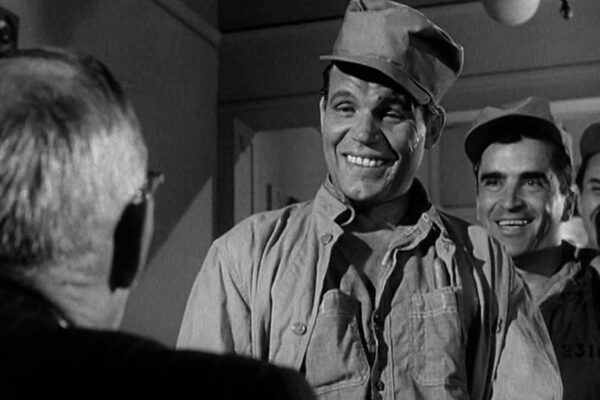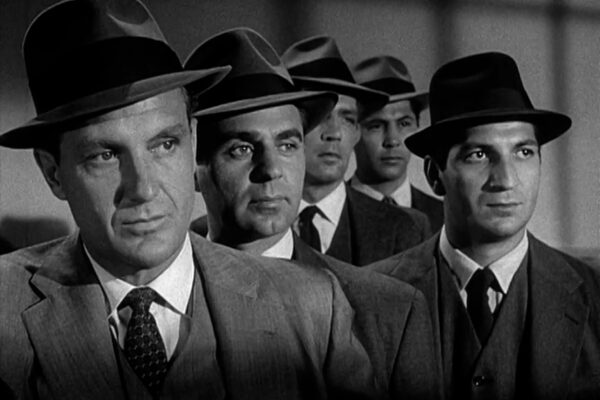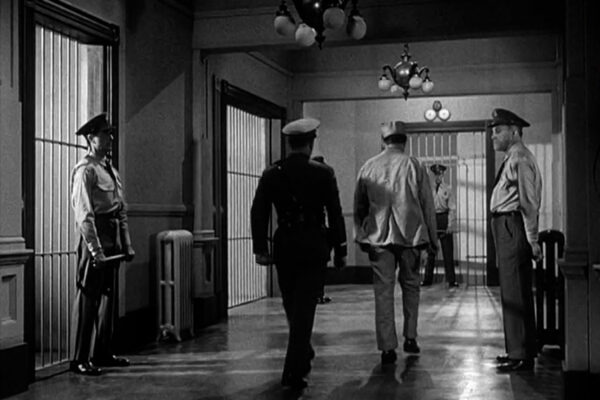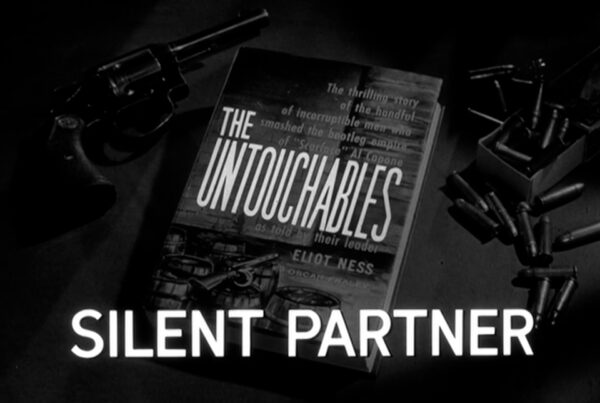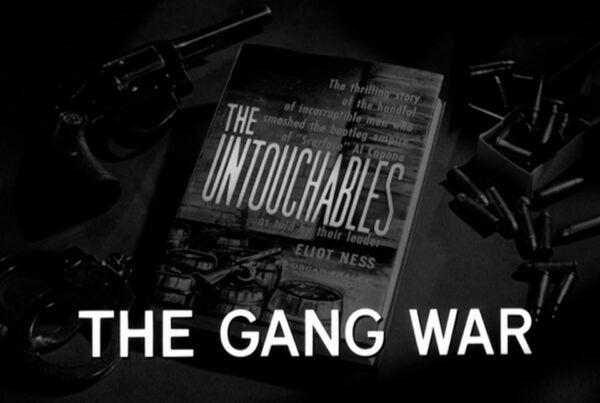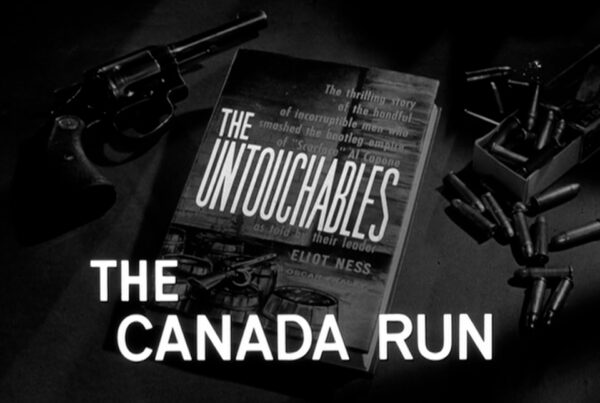PART TWO OF THE BIG TRAIN
Airdate: January 12th, 1961
Written by William Spier
Directed by John Peyser
Produced by Josef Shaftel
Director of Photography Charles Straumer
Special Guest Star Neville Brand
Co-starring James Westerfield
Featuring Richard Carlyle, Gavin MacLeod, Lewis Charles, Frank London, Lalo Rios, Russ Conway, William Schallert
“At 5 o’clock in the morning of August 19th, 1934, a transcontinental train journey began which was to be unique in history. Its destination was the new escape-proof prison on the island of Alcatraz, and its passengers were 54 case hardened and desperate criminals, headed by the gangster overlord whose deeds had given him the undisputed title of Public Enemy no. 1: Scarface Al Capone. With the aid of his Chicago organization and a dishonest guard named Lafferty, Capone had conceived a monumental plan, one that would affect his delivery from the train and ultimately land him safely out of the country.”
Having learned of the plans to free Capone during his transfer from Atlanta to Alcatraz by train, Ness attempts to determine the location of the break by closing in on an ex-con and former railway worker who bought himself into the scheme while doing time with Capone in prison. Thanks to a handful of slender clues, Ness corners the ex-con and intercept Capone’s henchman just moments before they make off with the airplane intended to deliver Capone across the border.
Hired by the Capone mob to intercept the train before it reaches Alcatraz, West Coast hoodlums and their leader Eric “The Swede” Holvig (James Westerfield), has overtaken the town of Cloverfield, California. As Ness, Hobson, and Rossman fool the occupying gang into thinking they’re Capone’s men, Youngfellow and Rossi infiltrate the town with a squad of federal agents and the town’s freed sheriff.
As the big train bears down on the town, Ness’ cover is blown. Amid a blazing gun battle, the Untouchables halt the mob’s efforts to free Capone from captivity and proudly preside over his admittance to Alcatraz the following day.
“The afternoon of August 22nd, 1934 witnessed the beginning of the end of the big-shot era of gangsterdom, Al Capone never again tasted a drop of power or influence. He served his sentence and died a broken wreck of a man, whose name was only a dim memory to most Americans. There are no big shots on The Rock.”
REVIEW
While The Big Train does not measure up to the grand scale achieved in the Cermak story, the series’ only other two-part episode, it does feel a lot like a Saturday matinee serial. In a way, it was. The 1948 film Last Train to Alcatraz bears some passing resemblance. The episode features an outlandish plot, a race against time, Ness and co. going undercover, and a massive gun battle with the Untouchables scoring a major victory against the mob – and even rarer – one made directly against Al Capone himself.
Part Two of The Big Train launches the story out west and into a small California town that looks more like the set for Gunsmoke than any place in which Eliot Ness should be arriving. In reality, this western set on Desilu’s Forty Acres backlot had been recently constructed by Desi Arnaz in hopes of winning more Western-genre productions, which at the time were in decline.
The contrast of Depression-era cars, fedoras, and Thompson sub-machine guns in a western setting is one of the more interesting elements of this weaker half, and while the writing isn’t bad, the action is clumsily staged as Ness and the squad making easy targets of themselves as they march up Cloverville’s Main Street laying suppressing fire on the sieged Cloverville train station.
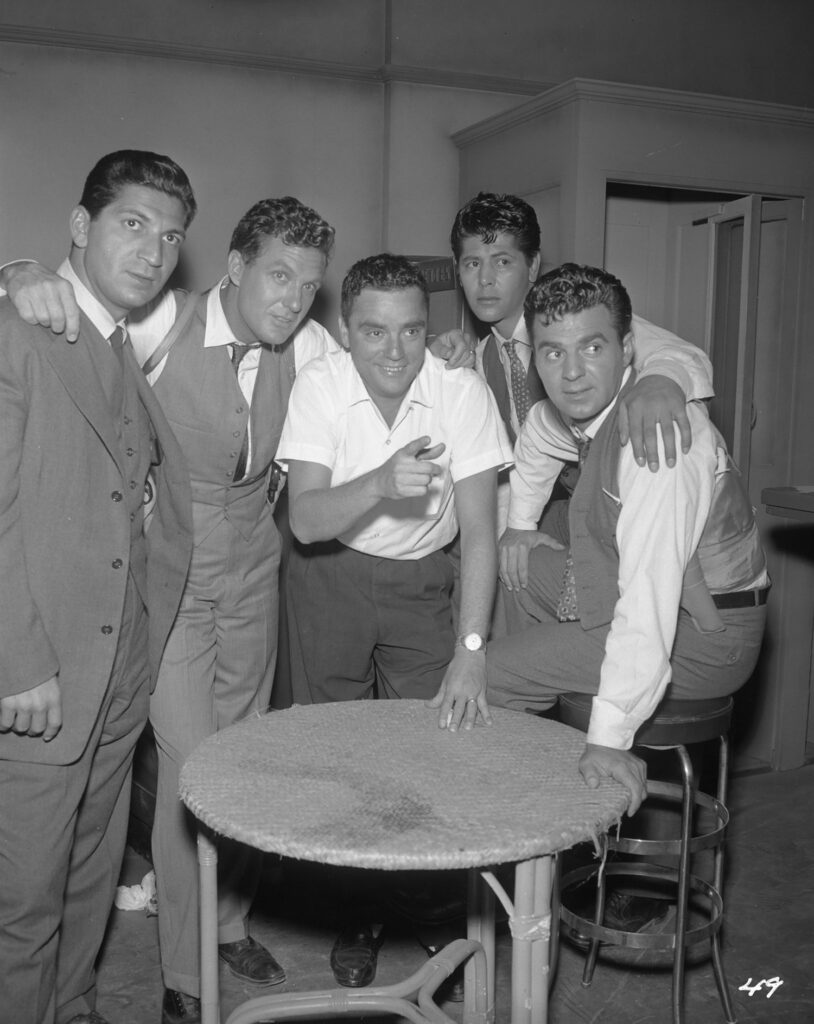
The Big Train was director John Peyser’s last contribution to the series.
While a line of G-men doing battle with the mob in the old west sure does cut an indelible image, the staging of the action and the lack of available shots (known as coverage) upset executive producer Jerry Thorpe and surprised star Robert Stack. (The hour’s earlier gun fight at the airport suffers from exactly the same problem.) Director John Peyser, by now an Untouchables veteran with nine episodes to his credit, was not the most adept at lensing action scenes and had been trying to save time, money, and film. As a result, the ending climax of the episode suffers for it. Following this episode, Thorpe dismissed Peyser from the series. The Jamaica Ginger Story, filmed earlier in the season and aired the following week, would be his last episode.
A few enjoyable moments do manage to pop up in Part Two: Ness and Hobson’s questioning of the pilot is a rarely seen bit of detective work, the telegraph warning about the danger of gangsters impersonating federal agents, Ness’ clever signal that he’s made it to town, the shot of Capone absorbing his fate while the Untouchables are framed in the passenger train window, and the ending with Ness watching as Capone is escorted to his jail cell, is very satisfying.
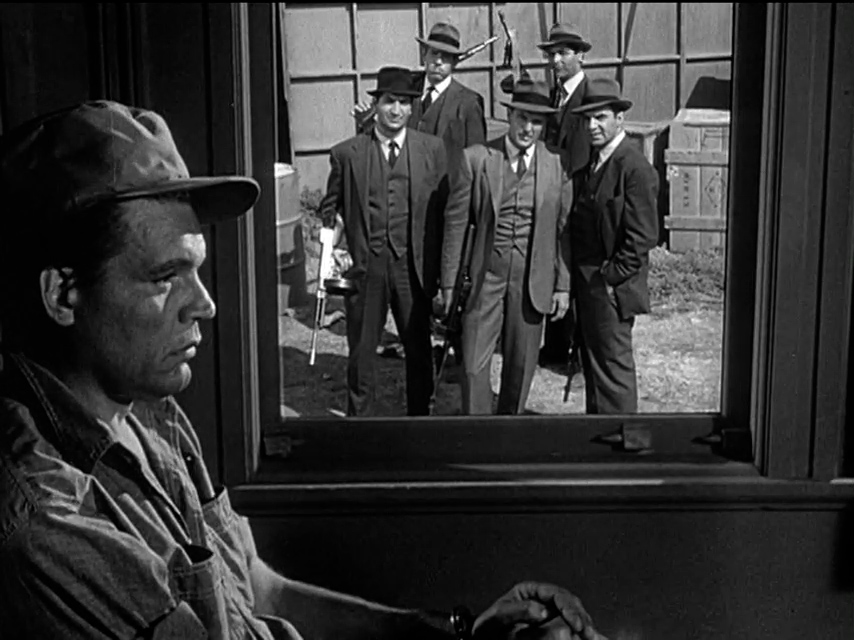
In a composite shot, Capone contemplates his future at Alcatraz as the Untouchables look on victoriously.
CLEARING THE DERAILMENT
In her review, Associated Press TV-Radio writer Cynthia Lowry wrote that “The Untouchables two-part drama, bullet-pocked and corpse-strewn, came to the anticipated happy ending Thursday night…Ness and his hardy aides were safe, sound, and ready for new adventures…” but for James V. Bennett, the Director of the U.S. Bureau of Prisons, it was anything but joyful.
As previously covered, the airing of Part One of The Big Train sent Bennett on a vendetta against The Untouchables. So incensed over the portrayal of Atlanta prison guards, he hoped to remove it from the airwaves.
Bennett immediately targeted the Federal Communications Commission and the broadcast license renewal process for 10 television stations through the country, hoping to preempt the airing of Part Two.
Bennett demanded that ABC halt the airing of Part Two until the matter could be reviewed by the attorney general and the FCC. ABC responded that the program would be presented between 9:30 PM and 10:30 PM Eastern Standard Time. Bennett would be embattled against the program and with the FCC for the next three months. Harold Cox, a former Atlanta prison official when Capone was their guest, was also “highly incensed” by the program and said the program should be labeled as fiction if it was intended as such.
While Bennett’s crusade fizzled, it put the real public dent in the program’s armor. The Untouchables was made to admit for the first time that it was fiction. Despite this, Lowry wrote:
“The Untouchables, a well-made, exciting and enormously popular series, is in a curious bind of its own making. Aside from the controversy…it was an exciting, taut, and very interesting show.”
For all its faults, The Big Train was to the Second Season what Ma Barker was to the first: a weak story unleashing much criticism that was difficult to defend.
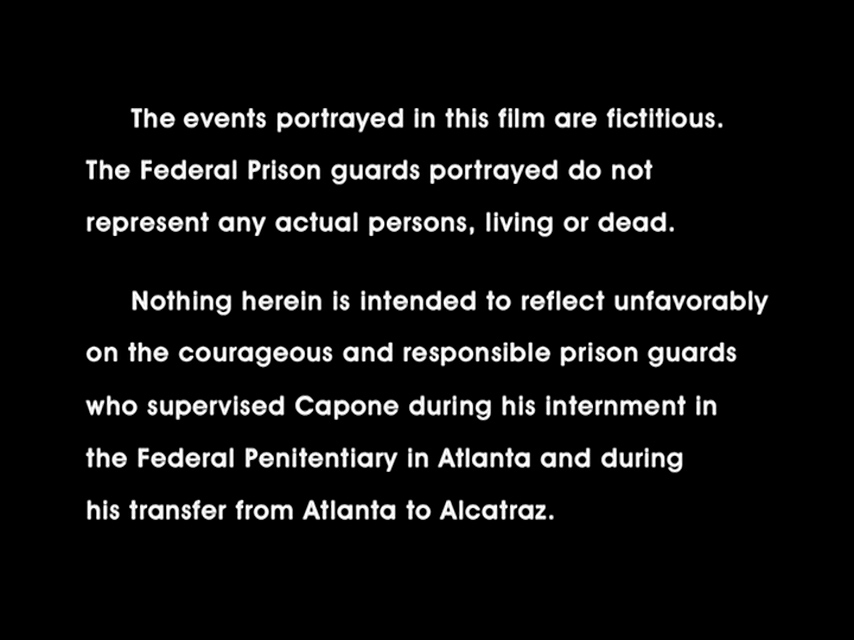
The disclaimer added to the theatrical version and subsequent re-runs. It would be the pre-cursor to the new disclaimer on all Untouchables episodes after.
OBSERVATIONS
• The passenger car set used for the prisoners is from another era entirely – and the seats lack the headrests that would have been in use on longer passenger train trips. Talk about an uncomfortable ride!
• As the Untouchables arrive at the Lone Eagle Flying Service, the Nelson Riddle music queue is sped up to change its pitch and cadence.
• Fred Noonan, owner of Lone Eagle Flying Service, is played by actor Eddie Firestone, who portrayed Untouchable Eric Hansen in the Desilu Playhouse film.
• Federal agent Garth (William Schallert) is killed in the gun-battle but the editing and coverage barely register it. You see him appear to trip and fall on the station steps as Ness fires on “Handsome” Johnny Rollins (Ron Hagerthy). Garth’s attempt to warn Ness at the start of the fight is also lost in a similar fashion.
• The effects shot showing the big train’s arrival on the Desilu backlot is impressively animated (the locomotive arriving on the Cloverville track is rotoscoped from a separate shot), as is the composite shot of Ness and his men watching Capone through the passenger train window. This one image is comprised of two separate shots, combined seamlessly together with the help of the camera move to simulate the train’s departure as the Untouchables walk alongside.
HISTORICAL NOTES
• There is indeed a Cloverdale, California, roughly outside the San Fransisco region, but not a Cloverville.
• Al Capone did check into Cell 181 at Alcatraz in August, 1934.


